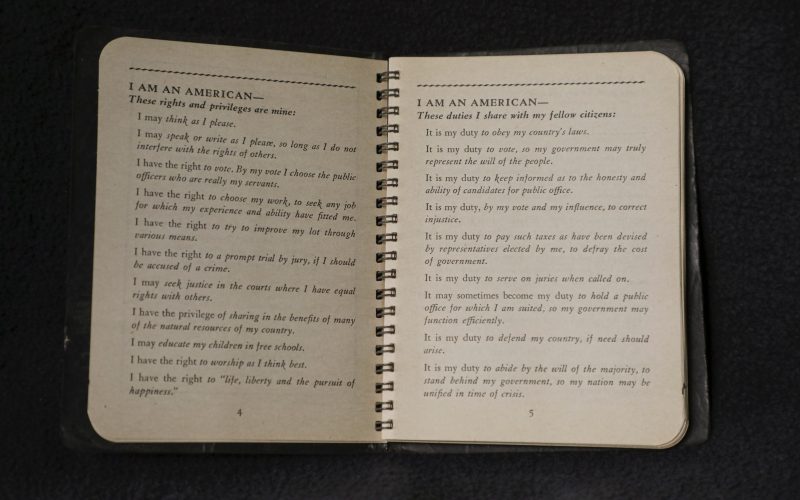Introduction to the Constitution
The United States Constitution is the backbone of American law and governance. It defines the roles and powers of each branch of government, establishes the rights and responsibilities of citizens, and sets forth a system of checks and balances to ensure that no one person or group becomes too powerful. But how well do you understand your constitutional rights? In this blog post, we’ll delve into some key issues surrounding the Constitution, including civil liberties vs. civil rights, federalism, and more. Whether you’re a student studying for an exam or simply interested in learning more about your own legal standing as an American citizen, read on to discover how to protect your rights by understanding these essential constitutional concepts!
The Bill of Rights
The Bill of Rights is the first ten amendments to the United States Constitution. It was added to protect individual liberties and limit government power. The Bill of Rights guarantees essential freedoms such as freedom of speech, religion, and press.
The First Amendment protects freedom of speech, religion, assembly, and the press. This amendment is important because it allows individuals to express themselves without fear of persecution or censorship from the government.
The Second Amendment guarantees the right to bear arms. This amendment has been a topic of controversy in recent years due to mass shootings across America.
The Third Amendment prohibits forced quartering of soldiers during peacetime without consent from homeowners. This amendment may not be as relevant today but ensures that citizens have control over their homes.
The Fourth Amendment protects against unreasonable search and seizure by law enforcement officials. It requires that warrants must be issued based on probable cause before searches are conducted.
The Bill of Rights serves as a cornerstone for American democracy by guaranteeing basic rights and protections for its citizens.
Civil Liberties vs. Civil Rights
Civil liberties and civil rights are two terms that are often used interchangeably, but they have distinct meanings. Civil liberties refer to the individual freedoms protected by the Constitution, such as freedom of speech, religion, and assembly. These liberties apply to all citizens equally and cannot be taken away without due process of law.
On the other hand, civil rights refer to legal protections against discrimination based on characteristics such as race, gender, or disability. This means that individuals have the right to be treated fairly in areas such as employment and housing regardless of their background.
While both civil liberties and civil rights are crucial for protecting individual freedoms and promoting equality in society, they can sometimes come into conflict with each other. For example, hate speech may fall under the protection of free speech but can also violate an individual’s civil right to not experience discrimination based on their identity.
It is important for individuals to understand these differences between civil liberties and civil rights so that they can advocate for themselves effectively when faced with discrimination or infringement upon their constitutional freedoms.
Federalism
One of the key features of the United States Constitution is federalism, which divides power between the national government and state governments. This means that some powers are given exclusively to the federal government, while others are reserved for the states.
For example, only Congress has the power to declare war or regulate interstate commerce. On the other hand, states have traditionally had control over areas such as education and law enforcement.
The concept of federalism was created in part to address concerns about too much centralized power in one governing body. It allows for a balance between a strong central government and protection of individual rights at a local level.
However, federalism can also lead to conflicts between different levels of government and uncertainty about who holds ultimate authority on certain issues. The ongoing debate over state vs. federal control on issues such as marijuana legalization highlights these tensions.
Federalism remains an important aspect of American governance that shapes policies and decision-making at all levels of government.
Conclusion
Understanding our key constitutional issues is crucial to protecting our rights. The Constitution and its amendments set forth the basic principles of our government, including individual freedoms, checks and balances on power, and federalism.
The Bill of Rights protects our civil liberties and rights from infringement by the government or other individuals. It’s important to understand the difference between these two concepts since they often overlap but have different protections under law.
Federalism ensures that powers are divided between state and federal governments in a way that maximizes efficiency while also providing for local control over certain issues like education or healthcare.
As citizens, it’s up to us to remain vigilant in protecting our rights by staying informed about current events and advocating for policies that align with our values. Understanding these key constitutional issues is an essential part of this process.
Remember: Our Constitution isn’t just a piece of paper; it’s a living document that shapes every aspect of life in America. So let’s celebrate it, protect it, defend it – always!











